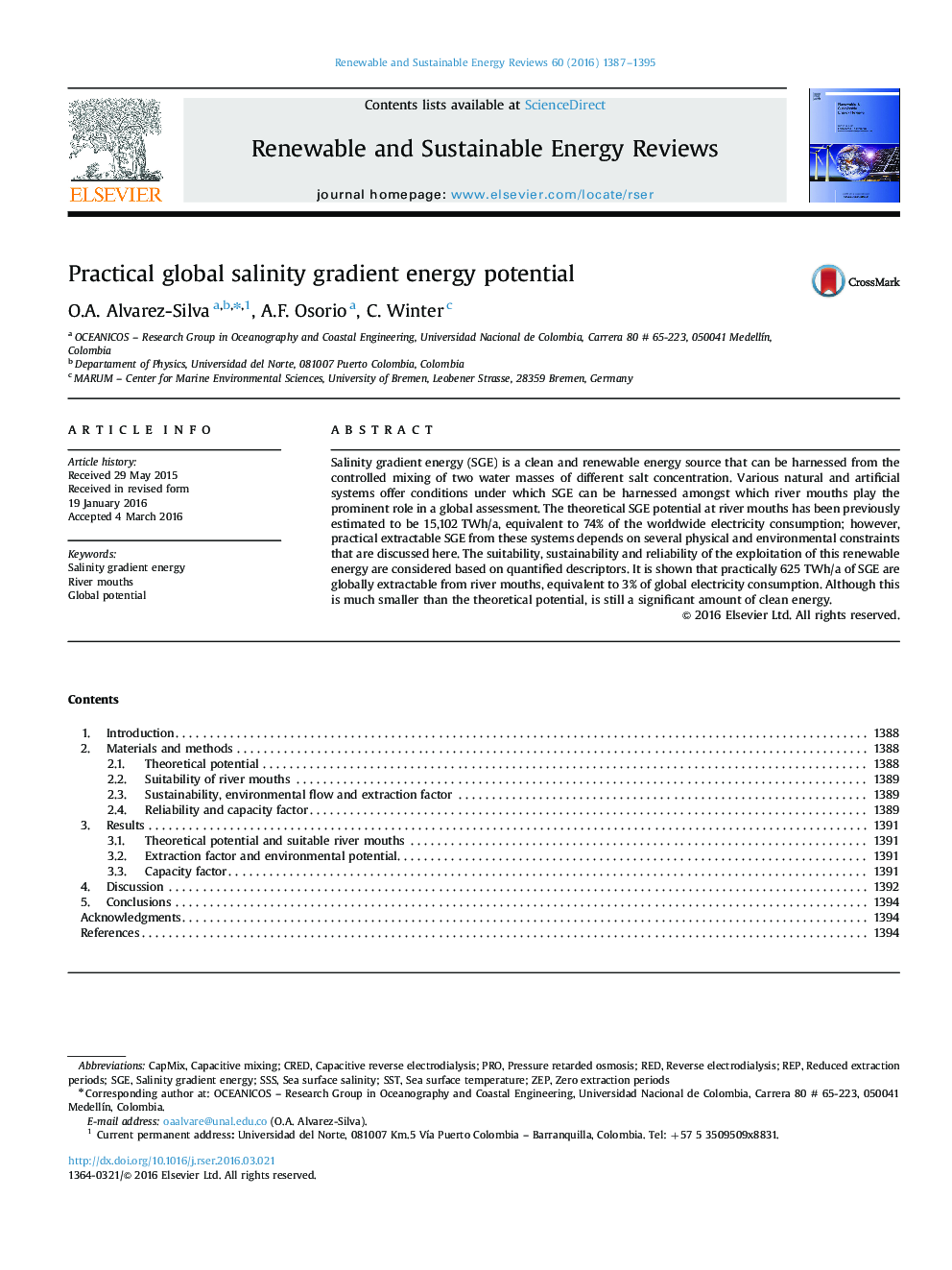| Article ID | Journal | Published Year | Pages | File Type |
|---|---|---|---|---|
| 8114508 | Renewable and Sustainable Energy Reviews | 2016 | 9 Pages |
Abstract
Salinity gradient energy (SGE) is a clean and renewable energy source that can be harnessed from the controlled mixing of two water masses of different salt concentration. Various natural and artificial systems offer conditions under which SGE can be harnessed amongst which river mouths play the prominent role in a global assessment. The theoretical SGE potential at river mouths has been previously estimated to be 15,102Â TWh/a, equivalent to 74% of the worldwide electricity consumption; however, practical extractable SGE from these systems depends on several physical and environmental constraints that are discussed here. The suitability, sustainability and reliability of the exploitation of this renewable energy are considered based on quantified descriptors. It is shown that practically 625Â TWh/a of SGE are globally extractable from river mouths, equivalent to 3% of global electricity consumption. Although this is much smaller than the theoretical potential, is still a significant amount of clean energy.
Keywords
Related Topics
Physical Sciences and Engineering
Energy
Renewable Energy, Sustainability and the Environment
Authors
O.A. Alvarez-Silva, A.F. Osorio, C. Winter,
